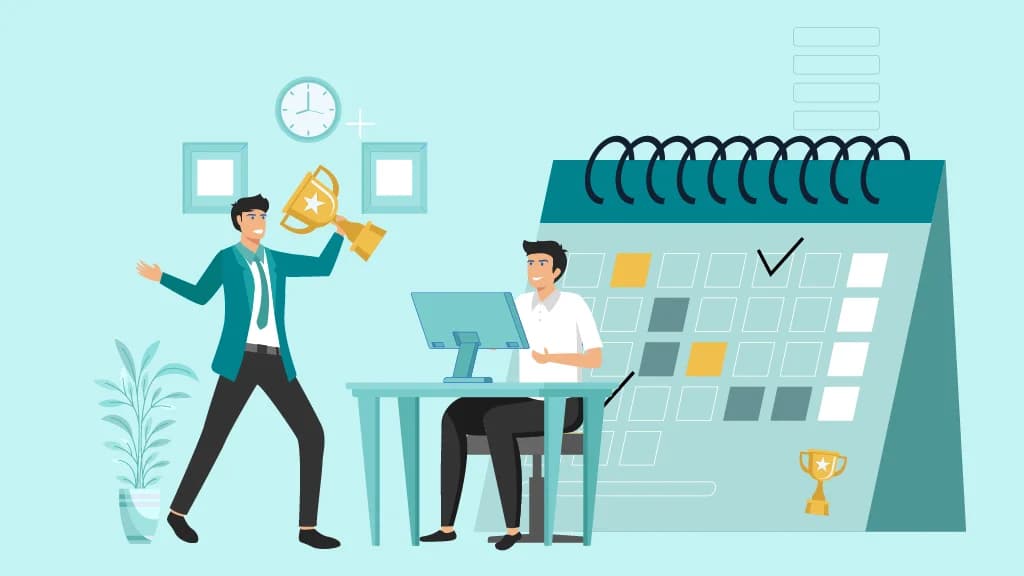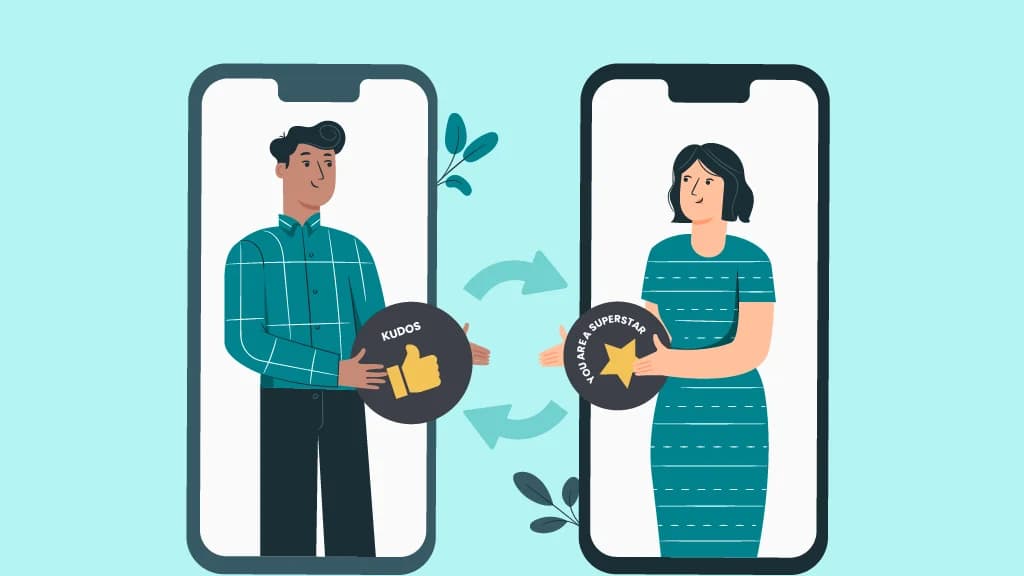
Just like smartphones need timely updates to function optimally, HR policies need regular refreshes to stay relevant and impactful. This is especially true for annual bonus programs, which were once effective but are now losing their relevance in today’s dynamic workforce.
The corporate landscape has evolved significantly in the last few decades. Employees now seek recognition that is immediate, meaningful, and personalized. Continuous reward mechanisms, which recognize employee contributions throughout the year, are proving to be far more effective than traditional annual bonuses. Platforms like AdvantageClub.ai have emerged as leaders in enabling these transformations, empowering companies with innovative tools to revolutionize employee engagement.
Why Annual Bonuses Are Becoming Obsolete
Annual bonuses were an effective motivational tool during the Industrial Age. Employees were often engaged in predictable, repetitive roles, and an annual payout was sufficient to incentivize their performance. However, the contemporary workforce, dominated by knowledge workers, operates differently.
Knowledge workers rely on creativity, problem-solving, and collaboration. They seek continuous feedback, recognition, and rewards to stay engaged and motivated. Here’s why traditional annual bonuses no longer meet the needs of modern organizations:
1. Challenges in Measuring Employee Performance
- In a marketing campaign, success is a team effort involving strategists, designers, content creators, and analysts. Identifying and measuring individual contributions can be subjective and prone to bias.
- Employees in client-facing roles, like account managers, may work equally hard but face different outcomes based on client dynamics, making performance measurement inconsistent.
AdvantageClub.ai’s real-time recognition platform addresses these challenges by enabling peer-to-peer recognition and immediate feedback. This ensures individual and team-based contributions are acknowledged promptly, fostering a culture of transparency and appreciation.
2. Why Delayed Rewards Don’t Work
A study by Harvard Business Review shows that timely recognition boosts employee morale by reinforcing positive behaviors and achievements. AdvantageClub.ai’s digital R&R platform allows managers to reward employees instantly with digital reward points, ensuring employees feel appreciated when it matters most.
3. Why Monetary Rewards Have Limited Impact
Non-monetary rewards create memorable moments and emotional connections. For example:
- A personalized mug with the employee's name or a company-branded jacket creates a sense of belonging.
- A curated experience, like a weekend getaway or dinner voucher, leaves a lasting positive impression.
AdvantageClub.ai’s extensive rewards catalog includes non-monetary options like personalized gifts, exclusive brand discounts, wellness benefits, and more, ensuring employees find value in the rewards they receive.
Why Continuous Rewards Are the Future of Employee Recognition
1. Why Incidental Rewards Matter
- A referral bonus is when an employee successfully brings in a qualified candidate.
- A spot bonus for an employee who solves a critical issue under tight deadlines.
AdvantageClub.ai’s platform streamlines the distribution of incidental rewards, allowing managers to recognize and reward employees instantly.
2. The Impact of Instant Employee Recognition
- A sales associate who closes a major deal receives reward points instantly through AdvantageClub.ai’s platform, which they can redeem for their favorite brands or experiences.
- A software developer who successfully resolves a critical bug gets immediate appreciation from peers through a digital badge, boosting their morale.
3. Non-Monetary Rewards: Building Memorable Moments
- Branded Merchandise: Items like personalized notebooks, mugs, or T-shirts with the company logo and employee name create a sense of pride.
- Experiential Rewards: Options like travel packages, spa treatments, or event tickets allow employees to create lasting memories.
4. How AI Drives Personalized Employee Rewards
Personalization is key to making rewards impactful. AI-enabled platforms like AdvantageClub.ai analyze employee preferences, work history, and behavior to recommend tailored rewards. For example:
- A fitness enthusiast might be rewarded with a gym membership or fitness tracker.
- An employee who frequently travels for work might prefer airline vouchers or hotel discounts.
Key Benefits of Continuous Employee Rewards
1. How Continuous Rewards Drive Employee Engagement
Real-time recognition creates a culture of appreciation where employees feel valued for their contributions. Engaged employees are more productive, motivated, and likely to stay with the organization.
2. How Continuous Rewards Reduce Turnover
When employees feel undervalued, they are more likely to leave. Continuous rewards programs address this by providing consistent recognition throughout the year. AdvantageClub.ai’s platform integrates peer-to-peer recognition, encouraging a collaborative and appreciative work environment.
3. Timely Recognition Keeps Employees Motivated
Immediate recognition reinforces desired behaviors and motivates employees to maintain high performance. AdvantageClub.ai’s instant rewards system ensures that employees are appreciated when it matters most.
Challenges in Transitioning from Annual Bonuses to Continuous Rewards
While continuous rewards offer clear benefits, transitioning from traditional bonus models can be challenging:
- Leadership Buy-In:
Senior leaders accustomed to annual bonuses may resist change. Presenting data on the ROI of continuous rewards can help overcome this. - Cultural Shift:
Employees and managers need time to adjust to new recognition practices. Strong leadership support and effective communication are critical. - Data Privacy Concerns:
Digital platforms must ensure robust security measures to protect sensitive employee information. Organizations must adhere to the highest standards of data protection, ensuring a secure environment. - Training Requirements:
Introducing new tools and processes requires training sessions to help employees and managers adapt seamlessly.
Balancing Individual and Organizational Rewards
- Individual Rewards: Recognize and reward employees continuously for their contributions.
- Organizational Rewards: Retain annual rewards tied to company performance, like profit-sharing or stock options.
Why Balance Matters in Rewards Programs
Balance in rewards programs, like those offered by AdvantageClub.ai, is crucial for driving employee engagement and satisfaction. A well-structured program combines monetary benefits with experiential and emotional rewards, ensuring inclusivity and personalization for a diverse workforce. AdvantageClub.ai’s platform enables organizations to design customized offerings catering to individual and company-wide goals, ensuring fairness and motivation. By integrating technology and data-driven insights, the platform creates a sustainable system that adapts to evolving employee needs. This balance not only fosters a sense of belonging but also enhances loyalty and productivity, enabling organizations to achieve long-term success through a well-rounded rewards strategy.
The Role of Technology in Continuous Rewards
- Digital Reward Points: Instantly recognize employees with points that hold monetary value.
- Global Rewards Catalog: Access to over 10,000 redemption options, including gift cards, merchandise, and experiences.
- AI-Driven Personalization: Tailor rewards to individual preferences for maximum impact.
- Gamification Features: Engage employees through badges, leaderboards, and other interactive elements.
Explore AdvantageClub.ai’s employee rewards program to learn how technology can transform your R&R strategy.
Transforming HR Policies for a New Generation
As the workforce evolves, so must HR practices. Employees today expect timely, meaningful, and personalized recognition. Continuous rewards—enabled by platforms like AdvantageClub.ai—are redefining how organizations engage their employees.
By integrating AdvantageClub.ai’s innovative solutions, companies can ensure their recognition programs are impactful, aligned with employee expectations, and designed for long-term success.






